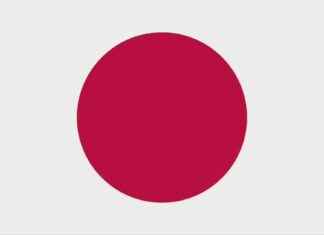LAS MANCHAS DE ABAJO (Canary Islands) — His house was the first. Then came the house that his father had built. The lottery stand and hardware shop he owned were also lost.
Antonio Alvarez was forced to watch as the lava from a volcano slowly ate the last pillar of his family’s wealth, the dozen acres that he had dedicated to the Canary Island banana plant. This banana has been the agricultural lifeblood for the Atlantic Ocean archipelago for generations.
My father used to tell me that if you build a house too big it will not make you any money. Instead, invest in bananas. Alvarez stated that bananas can give you a home. “Seeing my father die was the most painful thing about filming (the lava destroying his house). He was part of that house.
Alvarez (54), is one of many thousands of workers and farmers on Spain’s La Palma Island whose livelihoods were threatened by the destruction caused by volcanoes that are still active six weeks after it first burst open on Sept. 19.
According to the Canary Islands regional government, the volcano has already caused losses of 100 million euros ($116million) for the island’s banana sector. Molten rock has covered more than 390 acres (158 ha) of banana farm land. More than 700 acres (300 ha) were also cut off when roads on the western side of the island were engulfed by lava.
ASPROCAN, the banana growers association of the Canary Islands estimates that approximately 1,500 of the island’s 5,000 banana plantation owners have been affected. Many owners only have a small area of land. Alvarez is one of many who have seen their land burned and crushed. Others have lost their harvests due to being unable to reach their trees. Many others have lost their products due to the volcanic eruption that destroyed the banana peels.
According to statistics from the regional government, the industry accounts for 30% of the island’s economic life. La Palma is supported by a number of businesses that pack and transport the fruit.
They claim it has decimated 10% of the island’s economy. It is much more, I believe. Alvarez stated that it wasn’t just about the bananas or the apartments or the bed and breakfasts. It took everything. “What happened to us has also happened to 90% of those around us.”
La Palma is an island with 85,000 inhabitants and is the second largest producer of bananas for the archipelago’s eight members. It is located 100 km (60 miles) away from Morocco. It produced 148,000 tonnes of local banana last year, which was most of it being shipped to Spain’s mainland. Although it is more expensive than bananas imported from Latin America or Africa, the Canary Island banana is still preferred due to its sweeter taste.
The authorities have promised financial assistance to the sector and funding furloughs for workers. They also pledged to amend a law that states that lava-created land is the property of the state.
Desalination plants were shipped in to supply water-dependent banana tree trees in areas where the irrigation systems have been destroyed by lava flows. The government of the island has requested that the military consider ferrying farmers to help tend to the farms damaged by the rivers and lava.
However, the lava continues to spew from the Cumbre Vieja Ridge, and is now threatening to consume more land as its descent to the Atlantic.
Although the house of farmer Jesus Perez remains in danger, his most valuable property is now gone.
Perez, 56 years old, said that he would rather lose his house than my banana trees. The trees are your life, the house is your death. “I have given my whole life for nothing, and I am grateful.”








